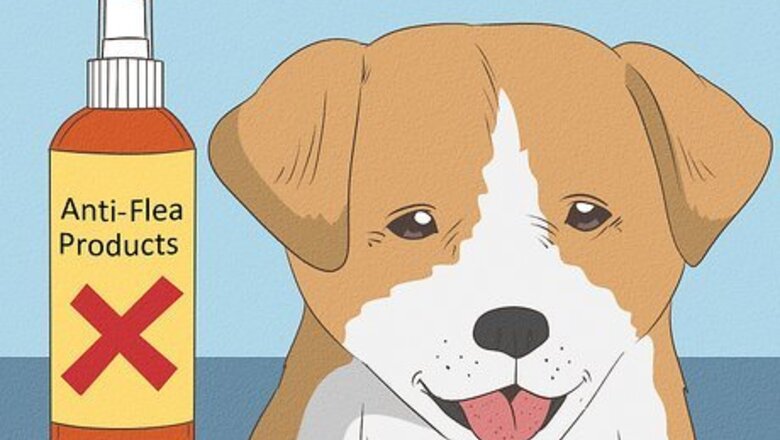
views
- Bathe your puppy in warm water, scooping the water with your hands and running it over the puppy’s coat.
- Then, brush your puppy’s damp fur with a flea comb, starting at their neck. Either squish the fleas you find, or drop them in boiling water.
- Prevent fleas by keeping your puppy away from other infected animals or bedding.
Treating the Puppy
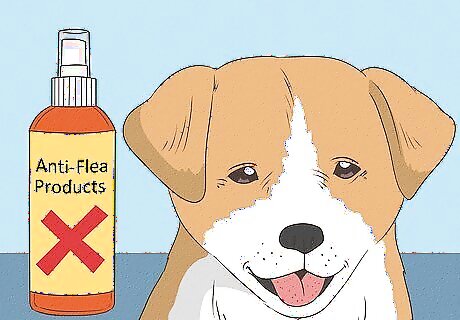
Understand why normal anti-flea products can't be used on puppies. Newborn puppies provide the perfect host for fleas — they are warm, produce moisture and provide blood for food. Unfortunately, there are no flea products that are safe for use on newborn pups. This is because puppies' internal organs are more delicate than those of older dogs and therefore more prone to adverse side effects caused by the anti-flea medications. Depending on the medication, these side effects may include excessive salivation, vomiting, respiratory issues and either over-sensitivity to stimulation or profound depression. Some anti-flea products will be clearly marked as unsuitable for puppies on the label. Other products have never been tested on puppies, so the manufacturers advise against using them. In particular, stay away from pet shop products that contain permethrins, as these are not safe for use in youngsters. Puppies' metabolisms are too immature and are unable to break down the permethrins, which can build up in the puppies' systems and cause neurological damage resulting in excessive shaking, drooling, paralysis or even seizures. Pet shop products that don't contain permethrin are unlikely to be effective and are a waste of money.
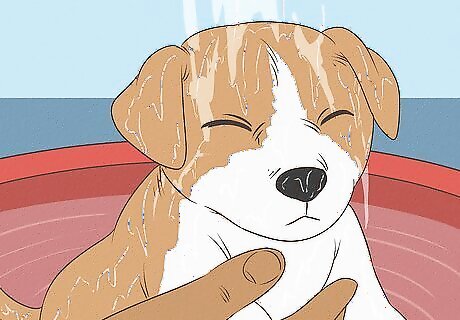
Bathe the puppy in warm water. As there are no commercial or prescription products suitable for use on young puppies, the only solution is to keep the puppy clean and try to remove any fleas manually. To bathe the puppy: Place a few inches of warm water into a sink or basin. The water should be approximately the same temperature you'd use to bathe a baby. Place the puppy in the water, using your hand to support its head and keep it above the water. Use your hand to scoop water over the puppy's coat until it is completely wet. Lift the puppy out of the water and place him on a clean, warm towel. Gently rub the puppy with the towel to remove excess water.

Use a flea comb to groom the puppy's coat and remove fleas. Place the puppy on a dry towel on a flat surface. Use a flea comb to groom the puppy's damp fur and remove any fleas. Flea combs have teeth that are very close together and work by physically pulling fleas out of the fur. Start at the puppy's neck and part the fur, combing a section at a time until you have covered his whole body and removed all of the fleas.
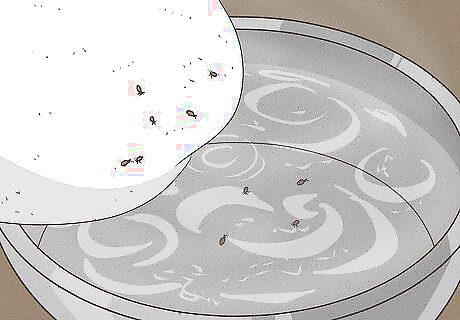
Kill the fleas by squashing them or putting them in boiling water. It's important to kill any fleas that you remove from the puppy's fur, otherwise they could find their way back and re-infest. You can kill the fleas by squishing them between your fingernails or by dropping them into a cup of boiling water. If you're using boiling water, make sure to place the cup where the puppy can't reach it, otherwise he could knock it over and burn himself.
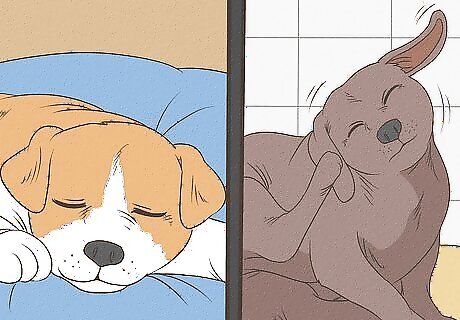
Keep the puppy away from infected bedding and animals. Once you have physically removed the fleas from his fur, the puppy should be free of fleas. However, there is no residual insecticide on his coat to stop new fleas from jumping onto him. Therefore it is important to keep the puppy away from his mother and any infected bedding until they can be treated. This will help to prevent the puppy from becoming reinfected.
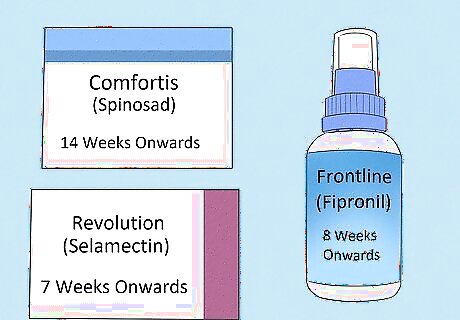
Know when it's safe to start using anti-flea products. Once your puppy grows older, his body will be able to handle the ingredients used in anti-flea products and they will be safe to use. Always follow the instructions on the label to find out when it's safe to start using a specific product. Of the licensed anti-flea medications: Revolution (active ingredient selamectin) can be used in puppies from 7 weeks of age onwards. Frontline (active ingredient fipronil) can be used at 8 weeks and over. Oral medications such as Comfortis (active ingredient spinosad) are only safe from 14 weeks of age onwards. Never use these products on pups below the recommended age.
Treating the Mother

Understand why it is necessary to treat the mother. If the puppies in a litter have fleas, then it's almost certain that the mother will have them too. As a result, it will be necessary to treat the mother in order to avoid reinfecting the puppies. Keep in mind that if there are any other animals in the house that have come in contact with the mother dog or puppies, they will need to be treated for fleas also.
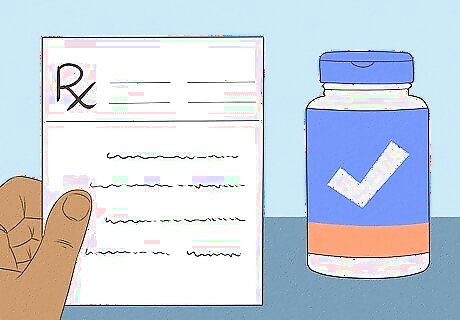
Only use prescription products, avoid over-the-counter or "natural" medications. Although anti-flea products can be used on the mother, it is important to be careful about the products you choose. If the mother is still providing milk for her puppies, certain chemicals can be passed onto the puppies through the milk, which could make them sick. Therefore, it is essential that you only use prescription products designed for use in lactating mothers. Some store bought products may be marked as "natural" or "drug free", but this does not mean that they are safe for very young puppies. And even if they don't cause any negative side-effects, natural or herbal products are unlikely to be effective in getting rid of fleas.
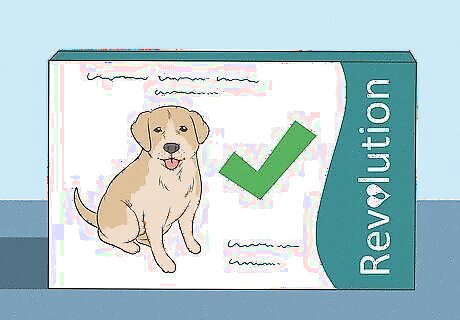
Use selamectin-based medications on pregnant and lactating mothers. Prescription medications that contain an ingredient called selamectin (such as Revolution and Stronghold) are licensed as being safe for use in pregnant and lactating mothers. The medication should be applied to the adult dog's skin, according to the manufacturers' instructions, and allowed to dry for several hours before the puppies are allowed to come in contact with the mother. Selamectin-based medications should only be given in the recommended dosages, and should only be administered topically. When given orally, selamectin was shown to cause foetal abnormalities in rats.
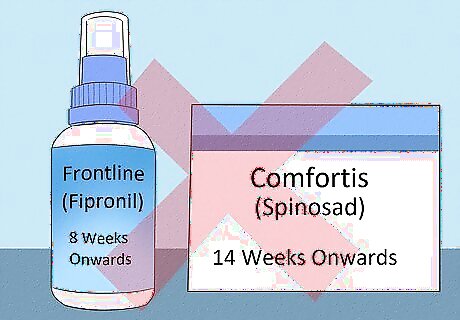
Avoid using medications containing fipronil and spinosad, as these are unsafe for lactating mothers. There are several ingredients used commonly in anti-flea medications that should never be given to pregnant or lactating dogs. Therefore, it's important to read the label very careful or consult with your dog's vet to avoid using products containing these ingredients. An ingredient called fipronil (which is found in an anti-flea product called Frontline) should never be used on pregnant or lactating mothers, as it has not been proven safe for puppies. An ingredient called spinosad (which is used in an oral flea treatment call Comfortis) has been shown to be excreted in the mother's milk. As it is uncertain whether spinosad causes negative side effects in puppies, you should avoid using this product to treat the mother.
Treating the Environment
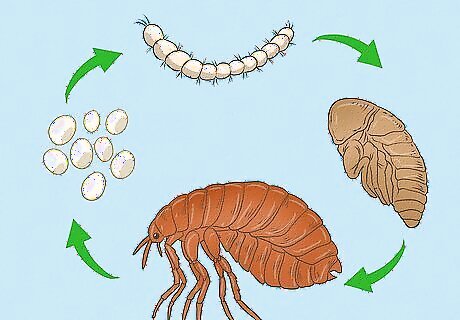
Understand the life cycle of the flea. The adult flea only visits its host to feed, so for every flea you see on the pet, it is estimated that another 20 are living off the animal in her bedding, the carpet, and the sofa. It is also important to be aware that the female flea lays her eggs on soft furnishings such as carpet and upholstery. These eggs are very hardy and, in the absence of a suitable host, can lie dormant for years. Once the eggs hatch, the flea larvae and pupae will develop in carpet or bedding, feeding off dirt in order to complete their life cycle and become adults. As a result, it is necessary to kill off any eggs or larvae hidden in the dog's bedding, or the carpeting and sofa, otherwise the mother dog or puppies could easily become reinfected.
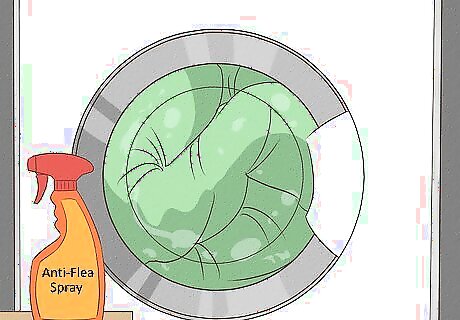
Wash the puppy's bedding to kill any fleas. As explained in the step above, the environment in which the puppy lives is likely to be rich with flea eggs, larvae and pupae waiting to mature into the next generation of fleas. Therefore, this bedding needs to be thoroughly cleaned and disinfected in order to fully eliminate the fleas. Flea eggs have an extremely tough protective shell, so putting the bedding through the washing machine will not be enough to eliminate them. Use an anti-flea spray or bombs that contains insecticide. The insecticide will find its way into remote corners of the bedding where flea eggs, larvae and pupae may be hiding. Use the insecticide according to the instructions on the packaging. Once you have applied the insecticide and given it time to take effect, you will need to put it through a very hot cycle in the washing machine to remove any residual insecticide (that could harm the puppies) and wash away dead eggs, larvae and fleas.
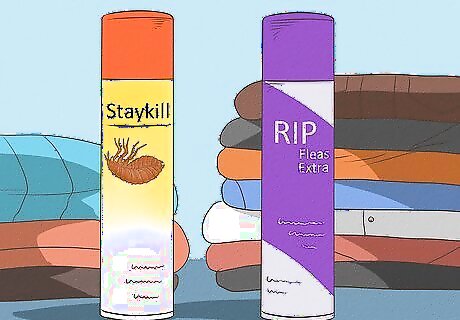
Use spray insecticides to kill fleas in carpeting and other fabrics. Finally, you will need to kill any fleas living in carpeting or any other soft furnishings. To do this, you should use a permethrin-based insecticidal spray, such as Staykill or RIP fleas. The manufacturers of these sprays recommend vacuuming prior to spraying. This loosens up the pile of the carpet and helps the spray to penetrate more deeply. In addition, the vibration from the vacuum is likely to ‘wake up’ the larvae who will then wriggle towards light in the hope of finding a host. Spray the insecticide onto the carpet, sofa and other soft furnishings according to the instructions on the label. The permethrins in the spray work by paralyzing the insects' nervous systems, interfering with muscle function and eventually causing death. Insects are unable to breakdown pyrethroids in the same way mammals can and are therefore far more sensitive to their effects Always remove the puppies, along with any other pets (including birds and fish) or children from the room before spraying with insecticide. Following the treatment, ventilate the room for several hours by opening the window, making sure the room is unoccupied.















Comments
0 comment